Abstract
Besides ethanol, acetic acid is produced in naturally fermenting sweet resources and is a significant environmental stress for fruit-breeding Drosophila populations and species. Although not related to the presence of an active alcohol dehydrogenase, adult acetic acid tolerance was found to correlate with ethanol tolerance when sensitive (Afrotropical) and resistant (European) natural populations of Drosophila melanogaster were compared. The same correlation was found when comparing various Drosophila species. Tolerance to acetic acid also correlated with the tolerance to longer aliphatic acids of three, four, or five carbons but did not correlate with the tolerance to inorganic acids (i.e., hydrochloric and sulfuric acids). These observations suggest that acetic acid is detoxified by the conversion of acetate into acetyl-CoA, a metabolic step also involved in ethanol detoxification. Future investigations on the adaptation of Drosophila to fermenting resources should consider selective effects of both ethanol and acetic acid.
Full text
PDF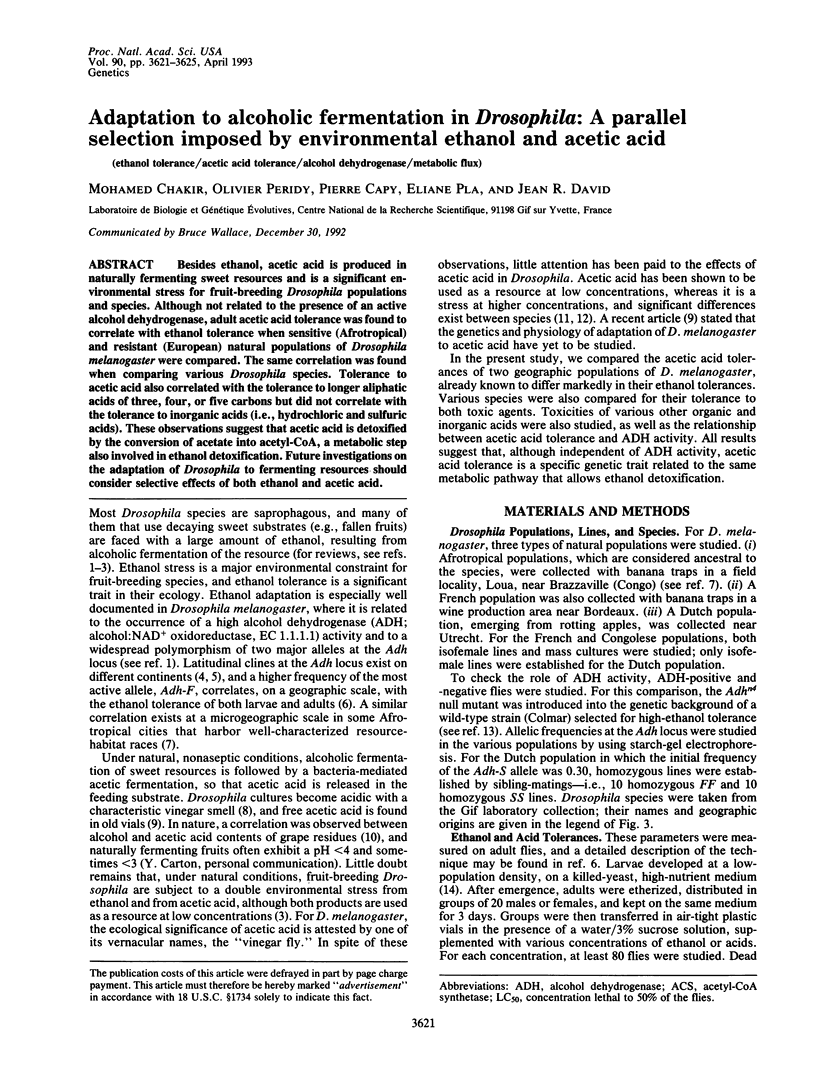
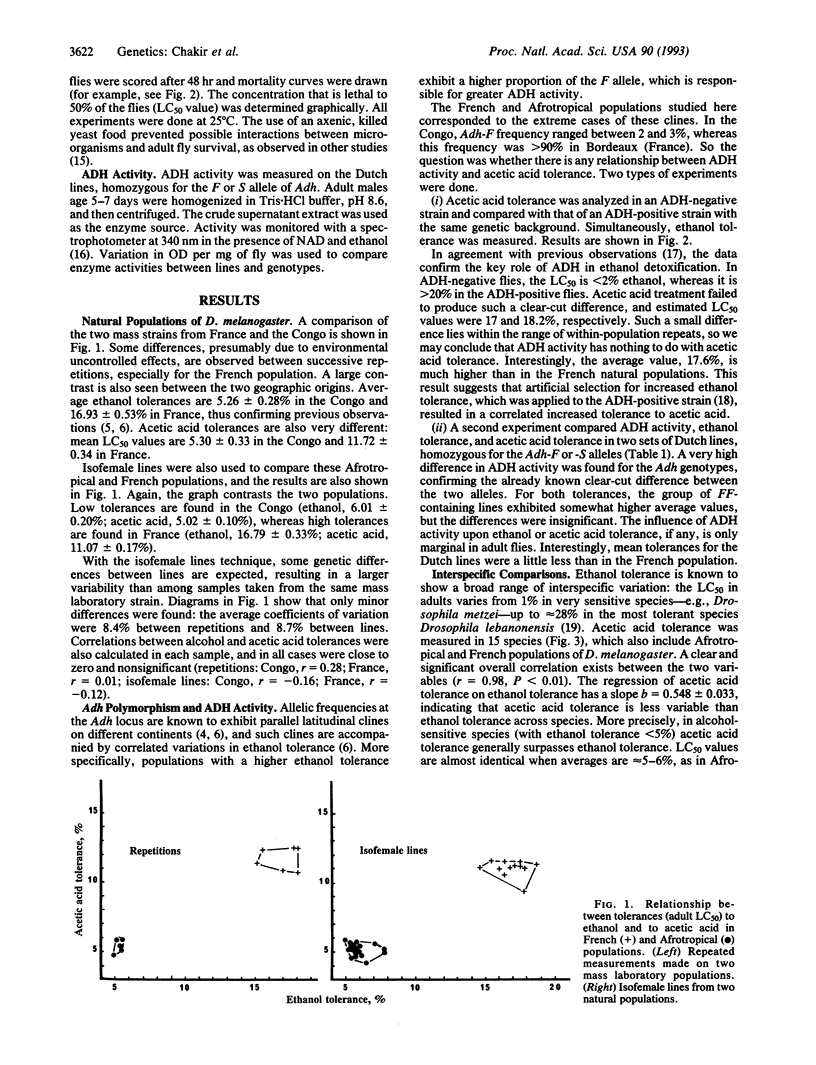
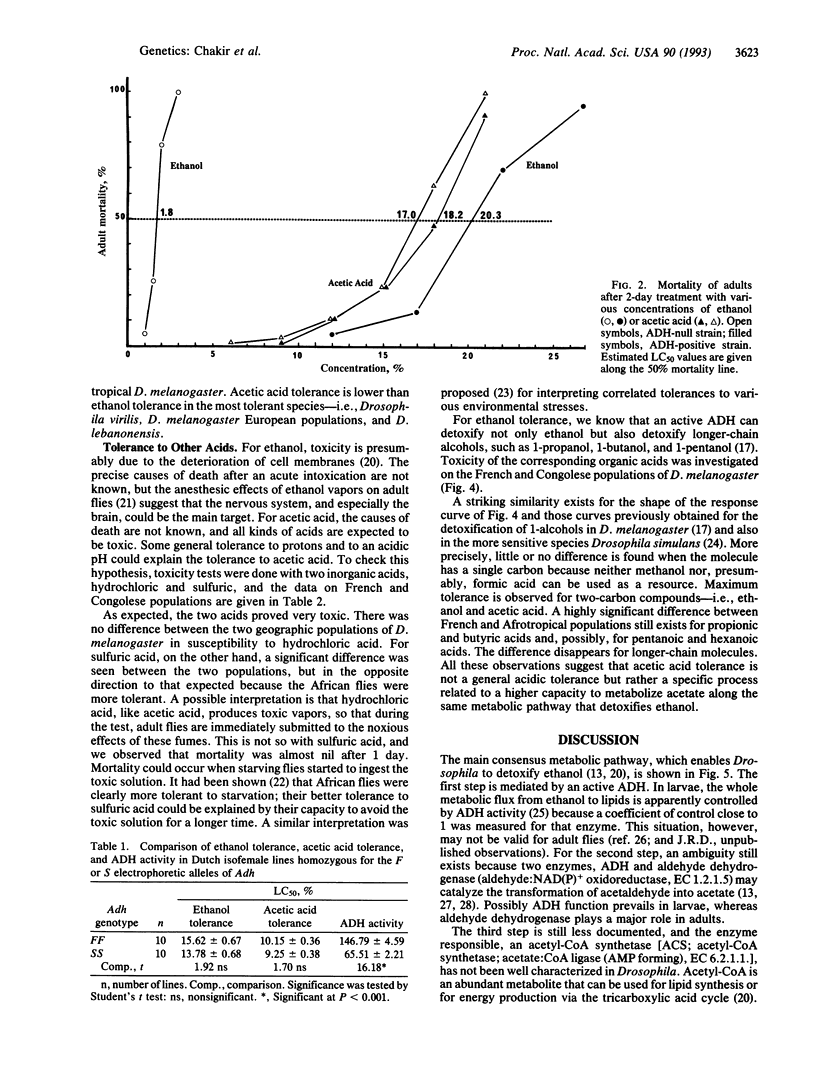
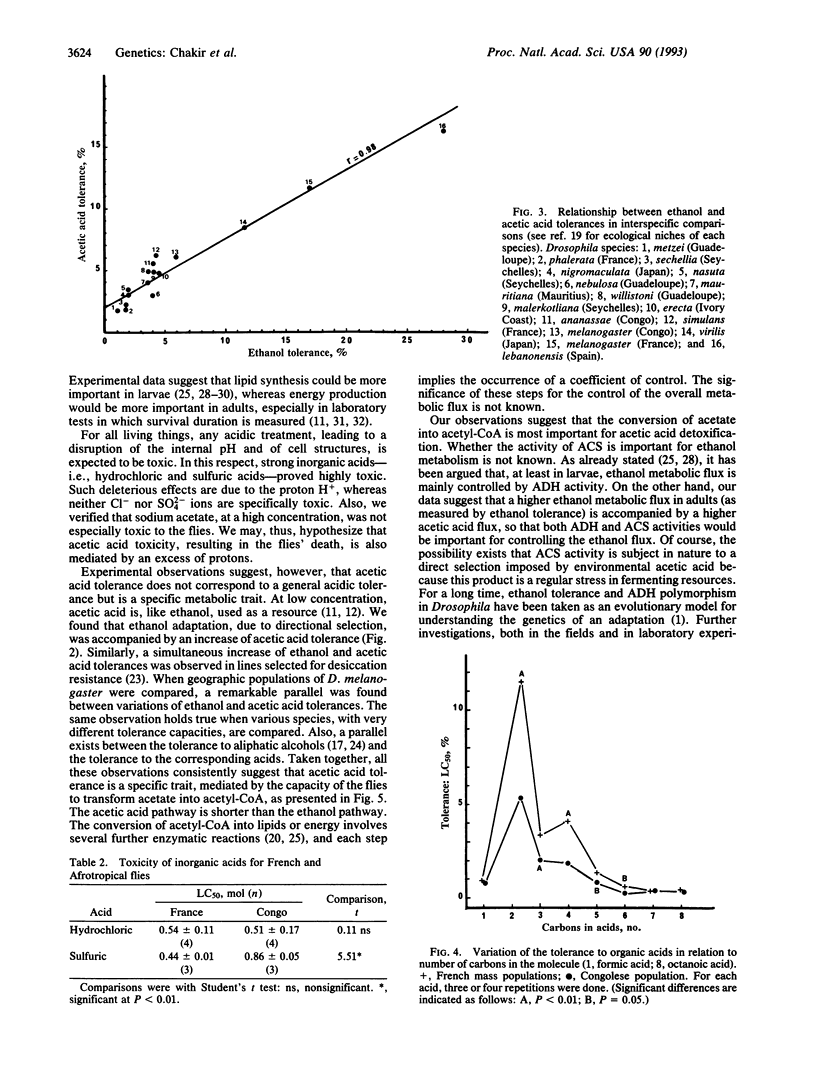
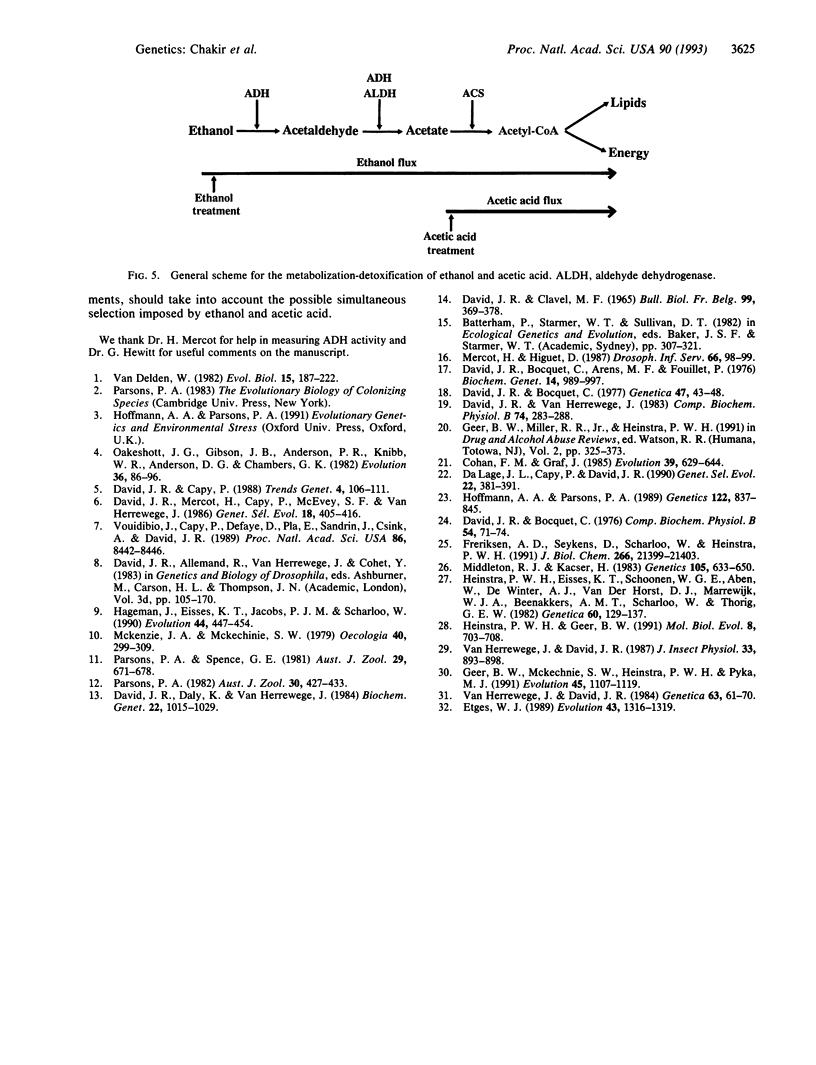
Selected References
These references are in PubMed. This may not be the complete list of references from this article.
- David J. R., Bocquet C., Arens M. F., Fouillet P. Biological role of alcohol dehydrogenase in the tolerance of Drosophila melanogaster to aliphatic alochols: utilization of an ADH-null mutant. Biochem Genet. 1976 Dec;14(11-12):989–997. doi: 10.1007/BF00485131. [DOI] [PubMed] [Google Scholar]
- David J. R., Capy P. Genetic variation of Drosophila melanogaster natural populations. Trends Genet. 1988 Apr;4(4):106–111. doi: 10.1016/0168-9525(88)90098-4. [DOI] [PubMed] [Google Scholar]
- David J. R., Daly K., Van Herrewege J. Acetaldehyde utilization and toxicity in Drosophila adults lacking alcohol dehydrogenase or aldehyde oxidase. Biochem Genet. 1984 Dec;22(11-12):1015–1029. doi: 10.1007/BF00499628. [DOI] [PubMed] [Google Scholar]
- David J., Bocquet C. Compared toxicities of different alcohols for two Drosophila sibling species: D. melanogaster and D. simulans. Comp Biochem Physiol C. 1976;54(2):71–74. doi: 10.1016/0306-4492(76)90066-6. [DOI] [PubMed] [Google Scholar]
- Freriksen A., Seykens D., Scharloo W., Heinstra P. W. Alcohol dehydrogenase controls the flux from ethanol into lipids in Drosophila larvae. A 13C NMR study. J Biol Chem. 1991 Nov 15;266(32):21399–21403. [PubMed] [Google Scholar]
- Heinstra P. W., Geer B. W. Metabolic control analysis and enzyme variation: nutritional manipulation of the flux from ethanol to lipids in Drosophila. Mol Biol Evol. 1991 Sep;8(5):703–708. doi: 10.1093/oxfordjournals.molbev.a040679. [DOI] [PubMed] [Google Scholar]
- Hoffmann A. A., Parsons P. A. Selection for increased desiccation resistance in Drosophila melanogaster: additive genetic control and correlated responses for other stresses. Genetics. 1989 Aug;122(4):837–845. doi: 10.1093/genetics/122.4.837. [DOI] [PMC free article] [PubMed] [Google Scholar]
- Long W. J., Jr, Garrison N. E., Sellers C. M., Jr Malate dehydrogenase activity and isozyme patterns during amphibian metamorphosis. Comp Biochem Physiol B. 1983;74(2):283–287. doi: 10.1016/0305-0491(83)90013-5. [DOI] [PubMed] [Google Scholar]
- Middleton R. J., Kacser H. Enzyme variation, metabolic flux and fitness: alcohol dehydrogenase in Drosophila melanogaster. Genetics. 1983 Nov;105(3):633–650. doi: 10.1093/genetics/105.3.633. [DOI] [PMC free article] [PubMed] [Google Scholar]
- Vouidibio J., Capy P., Defaye D., Pla E., Sandrin J., Csink A., David J. R. Short-range genetic structure of Drosophila melanogaster populations in an Afrotropical urban area and its significance. Proc Natl Acad Sci U S A. 1989 Nov;86(21):8442–8446. doi: 10.1073/pnas.86.21.8442. [DOI] [PMC free article] [PubMed] [Google Scholar]


